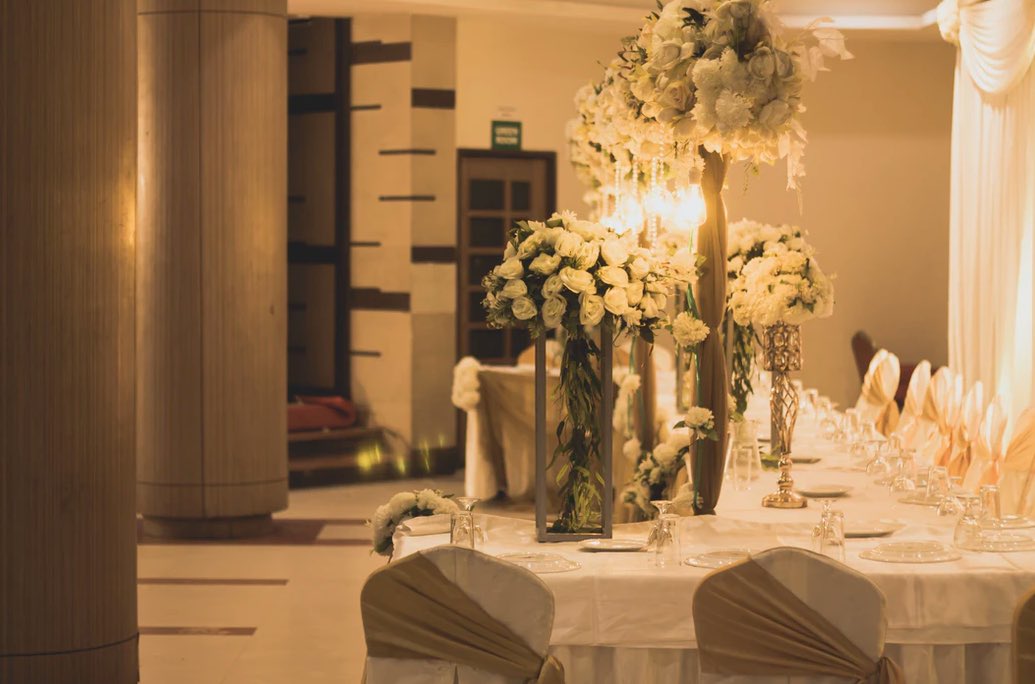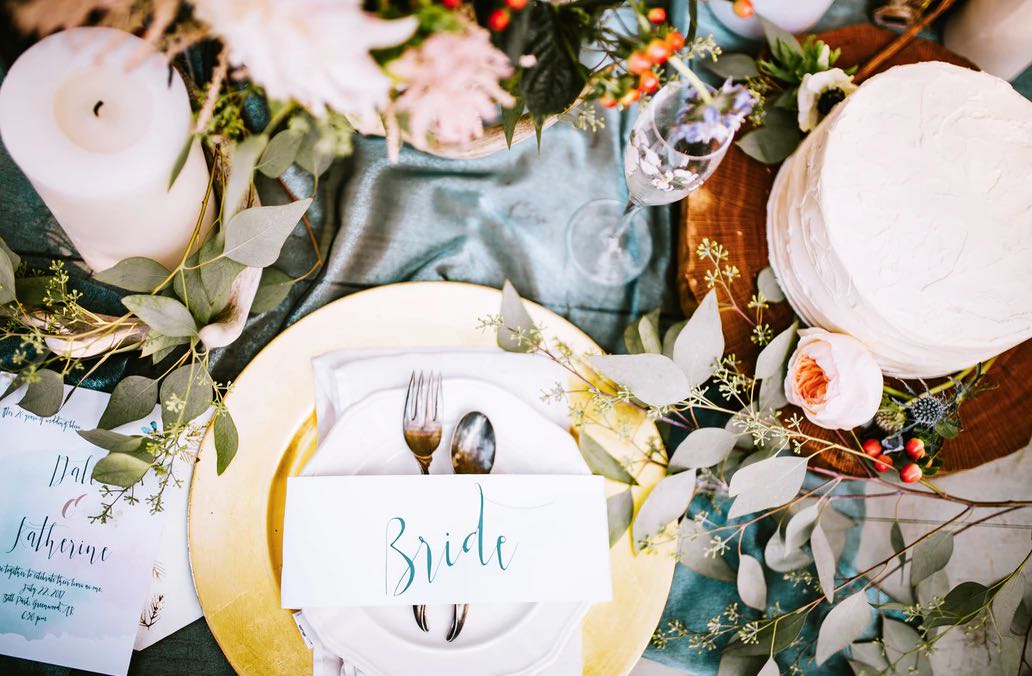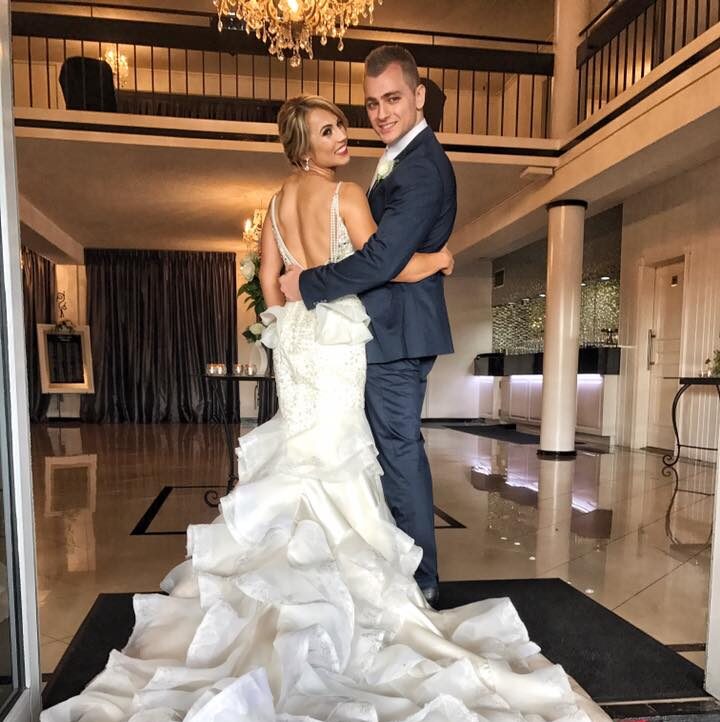Wedding planning can feel a bit like juggling—you’re constantly keeping multiple balls in the air, hoping nothing falls. One of the most crucial (but often overlooked) aspects is how much time you should allow between the wedding ceremony and the reception. Trust me, I’ve been there: when I planned my own wedding at Vogue Ballroom in 2017, the timing between our ceremony and reception was a bit of a learning curve. We had the ceremony in the afternoon, and I remember worrying about how much time we should leave for the in-between.
There’s no one-size-fits-all answer. The gap depends on several factors, like venue locations, your wedding timeline, and guest expectations. In this post, I’ll walk you through why timing matters, how long your gap should be, and most importantly, how to keep your guests engaged and comfortable during the wait.
Why Timing Matters for Your Wedding Day
The Importance of Seamless Transition Between Events
When I talk to couples about wedding planning, one of the biggest concerns I hear is how to maintain momentum throughout the day. Think about it—your ceremony is likely the most emotional part of the day. You exchange your vows, share intimate moments with your closest family and friends, and then… You hit the pause button. A sudden, awkward gap between the ceremony and reception can feel like a flat tyre on an otherwise smooth ride.
I remember a couple from Melbourne I worked with a few years ago, who had their ceremony at a beautiful church in Fitzroy and then had to travel to a reception venue in Richmond. They had a two-hour break in between, and honestly, the vibe felt like it deflated a little. Guests were uncertain about what to do with their time, and I could see how the energy from the ceremony faded by the time they finally reached the reception.
If there’s one thing I can say from my experience as a former Vogue Groom, it’s this: you want the transition to feel natural, not forced. Giving your guests something to do—whether it’s a cocktail hour or a fun game—helps keep the momentum going and sets the tone for a great celebration ahead.
How A Long Gap Affects Your Wedding Celebration
Let me put it this way—long gaps between the ceremony and reception are a bit like that second cup of coffee that’s too much. At first, it feels fine, but soon it becomes overwhelming. The problem is, your guests are there to celebrate with you, but a long waiting period can create discomfort. People get restless. A couple I worked with had a three-hour gap between their church ceremony and reception, and it was a serious challenge to keep everyone engaged. They opted to host a mini pre-reception gathering at a nearby restaurant, but it wasn’t quite the same. That’s a real example of how a long wait can have unintended consequences.
In the end, guests expect a smooth flow between your ceremony and the reception. No one likes being left hanging without direction, and if the gap is long, it can even put a damper on the excitement of your big day. It’s important to find that sweet spot—a gap that gives everyone time to catch their breath without letting the energy fizzle out.
Understanding the Ideal Time Gap Between Your Ceremony and Reception
What’s the Average Gap Between the Ceremony and Reception?
In my experience, most couples typically plan for around 1 to 1.5 hours between their ceremony and reception. This window seems to work well, as it allows for a relaxed transition without feeling like a marathon.
I’ve worked with couples who had their ceremony in a church or other religious venue, and then their reception at a completely different location. In these cases, the gap can stretch a little longer, particularly if the reception venue is a good distance away. But, as a rule of thumb, you want to avoid making your guests wait too long. Most of them are ready to party, and the last thing you want is for them to feel like they’re waiting for a bus that never arrives.
If you’re aiming for a short, intimate ceremony with close family and friends, you can usually get away with a shorter gap. But if you’re hosting a grand wedding with a large guest list, like a destination wedding or a formal wedding in a major venue, you’ll want to take more time to ensure everything runs smoothly.
Factors That Influence the Timing of Your Wedding Reception
There’s more to timing than just “how long should we wait?” Here are a few factors to consider:
- Venue Locations: If your ceremony and reception are in different locations, transportation time can eat up a chunk of the gap. This could be the case for a church wedding, where the ceremony is held in a religious setting but the reception is at a separate venue like a ballroom or a winery. If this is the case, you’ll need to plan accordingly to allow for enough time for guests to travel from one location to the next without feeling rushed.
- Travel Time: Particularly if you’re hosting a destination wedding or if the ceremony is in a church and the reception is elsewhere, you’ll need to account for travel time. For example, a wedding in Melbourne’s CBD with a reception at an outer-suburb venue could easily involve a 30-minute or more travel time. If you’re getting married somewhere in regional Australia or an iconic location like the Great Ocean Road, plan for extra time to avoid stressing guests.
- Vendor Scheduling: Your vendors will play a big role in determining the timing of your wedding day. Your photographer will need time to capture family photos, your DJ or band will need to set up, and your caterers may need time to prepare or set up the food for the reception. Coordinating with these vendors will help you avoid delays.
Managing Your Guests During a Long Gap
How to Keep Guests Engaged When There’s a Delay
If there’s one thing I’ve learned over the years, it’s that keeping your guests entertained is just as important as the ceremony itself. Imagine this: you’ve just said your vows, and your guests are eager to celebrate. But then, there’s an awkward wait before the reception starts. This is when things can go sideways, especially if you don’t have a plan in place.
I’ve worked with couples who faced this exact situation. Take Sarah and Michael, for example, who were married in a beautiful church in the suburbs of Melbourne. After the ceremony, there was a two-hour gap before their reception, which was held at a gorgeous winery about 40 minutes away. Rather than letting guests wander around aimlessly, they organised a small gathering at a local café. The café served drinks and snacks, and they had a small area for guests to chat and mingle. This simple move helped keep the excitement high and ensured that the celebration continued without a hitch.
When planning for a gap, think about ways to keep your guests busy. If your venue doesn’t have an option for an indoor or outdoor gathering, consider providing local recommendations on what to do in the area. You could suggest nearby attractions, cafes, or parks where guests could hang out and kill time before the reception. Trust me, a little effort can go a long way in ensuring your guests feel appreciated, and that they don’t lose the excitement.
How to Avoid a Long Gap Between Ceremony and Reception
Can You Have Your Ceremony and Reception at the Same Venue?
The easiest way to avoid any gaps between your ceremony and reception is to host both events at the same venue. I’ve worked with a lot of couples who opt for this for good reason—it’s convenient, and it completely eliminates the potential for guests to get restless during the wait.
If you’re planning a formal wedding in Melbourne, places like Vogue Ballroom offer the perfect solution. You can have the ceremony in one area, and then seamlessly transition to the reception. This approach also helps with vendor coordination because you don’t have to worry about coordinating transport for your vendors between multiple locations. With everything under one roof, you can keep the energy high, the timeline tight, and your guests happy.
But it’s not just about the venue’s convenience. I’ve seen couples choose the same venue for both events, but still make it feel unique. For example, you could host the ceremony outdoors in a garden or on the venue’s terrace, then move to an elegant ballroom or courtyard for the reception. You can switch up the atmosphere without losing that natural flow between the two events.
How a Wedding Planner Can Help Coordinate the Day’s Events
I can’t stress enough how invaluable a wedding planner can be when it comes to coordinating your timing. In my own wedding planning experience, we had a team that worked behind the scenes to ensure everything ran smoothly. From making sure the ceremony was on time to ensuring the reception started promptly, they played a huge role in keeping the flow consistent.
If you’re having a more complex wedding—maybe a destination wedding or a religious ceremony with many traditions—having someone coordinate the timing is a lifesaver. Wedding planners help manage the logistics, and they often know tricks that you might not have considered. For instance, they might recommend scheduling photos immediately after the ceremony so that there’s enough time before guests start to wander off. Or, they’ll advise you on how long you should expect to wait for guests to arrive at the reception if there’s a gap.
The beauty of hiring a planner is that they’ve seen it all. They’ll know the perfect timeline for your wedding style and ensure that everything stays on track, from start to finish.
Tips for Planning Your Ceremony and Reception Timing
Ah, wedding photos. As a former groom, I’ll tell you: these photos are precious, but they don’t have to consume your entire day. A lot of couples I work with make the mistake of allocating too much time for photos after the ceremony. Yes, you want beautiful pictures, but it’s all about balance.
In my case, we planned our photo session immediately after the ceremony. We had a dedicated slot in our timeline for group photos, family portraits, and some couple shots. We then scheduled a couple of quick snaps during the cocktail hour, which worked out perfectly. If you do it right, the timing won’t feel rushed or dragged out. I recommend you speak with your photographer ahead of time to create a shot list. This will save you from wasting time during the event while still ensuring you get the beautiful photos you want.
When Should the Dinner and Dancing Begin?
Once the ceremony and photos are wrapped up, it’s time to eat, drink, and celebrate! Typically, most receptions kick off with drinks and hors d’oeuvres. The dinner is usually served about an hour after the reception officially starts, followed by speeches, dancing, and partying.
But if you’ve got a larger wedding, you may want to extend this timeline. Large weddings with extensive speeches and multiple courses can make things a bit longer. In these cases, I recommend having a solid timeline in place and ensuring your caterers and entertainment team know when the action needs to begin. You don’t want your guests to get restless waiting for the main event to start!
Wedding Ceremony to Reception Timing
Key Takeaways for Wedding Day Timing
At the end of the day, the goal is to ensure that everything flows smoothly and your guests are comfortable throughout the process. Here’s a quick recap to keep in mind as you plan the timing between your wedding ceremony and reception:
- Aim for 1 to 1.5 Hours: Ideally, leave about an hour to 1.5 hours between the ceremony and reception. This gives enough time for travel, photos, and any small delays, without making guests feel like they’re waiting forever.
- Keep Guests Engaged: If you have a longer gap, be proactive. Provide entertainment, whether it’s a cocktail hour, local recommendations, or even a fun activity. This will keep your guests comfortable and entertained while they await the main event.
- Consider Venue Locations: If possible, choose a venue that allows for both the ceremony and reception to take place in the same location. This cuts down on the need for excessive travel time, which can extend the gap unnecessarily.
- Work With Your Vendors: Your vendors, like your wedding planner and photographer, can help you determine the best timing for photos, speeches, and meals, ensuring the event stays on track.
- Plan for Flexibility: Remember, unexpected things can happen. Factor in a little extra time just in case something runs behind. Flexibility is key to making sure the day runs without a hitch.
Don’t Let a Long Gap Ruin Your Wedding Day Experience
In the grand scheme of your wedding day, the gap between the ceremony and reception may seem like a small detail, but it can make all the difference. With a little planning and consideration, you can ensure that this part of your day is smooth and enjoyable for both you and your guests. After all, the last thing you want is for your celebration to lose its momentum.
With the right balance, you can create a seamless flow that keeps everyone excited for what’s to come next, whether it’s a fabulous dinner, heartfelt speeches, or the first dance. And remember, the goal is not just to avoid a long gap but to manage the day in a way that reflects your style and gives your guests a memorable experience.
Let’s Get Straight to the Point
The time between your wedding ceremony and reception is a key detail that can impact your wedding day experience. Ideally, you should allow 1 to 1.5 hours between the two events to give guests time to travel, enjoy a cocktail hour, or relax without feeling bored or rushed. If your ceremony and reception are at different venues, account for travel time and consider ways to keep guests entertained during any longer gaps. Keep your guests engaged with activities or local recommendations if you do have a long wait. Ultimately, the goal is to maintain a smooth transition and high energy between events, ensuring your celebration flows seamlessly from start to finish.




